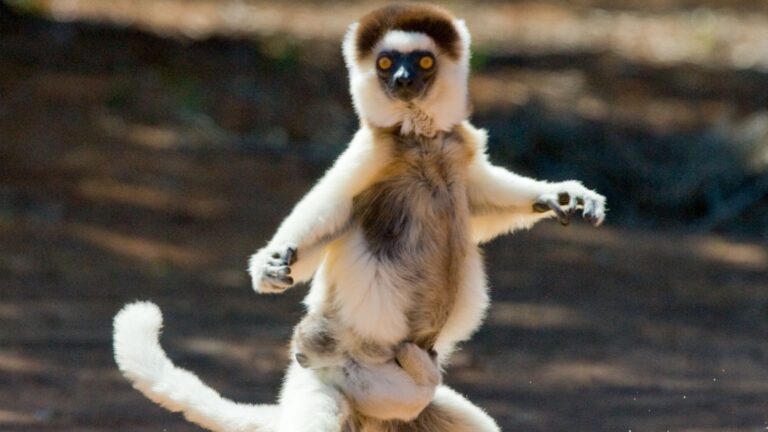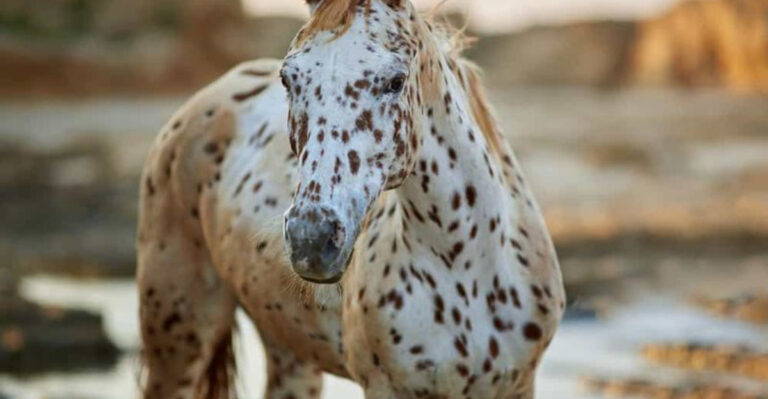15 Incredible Facts About The Endangered Snow Leopard
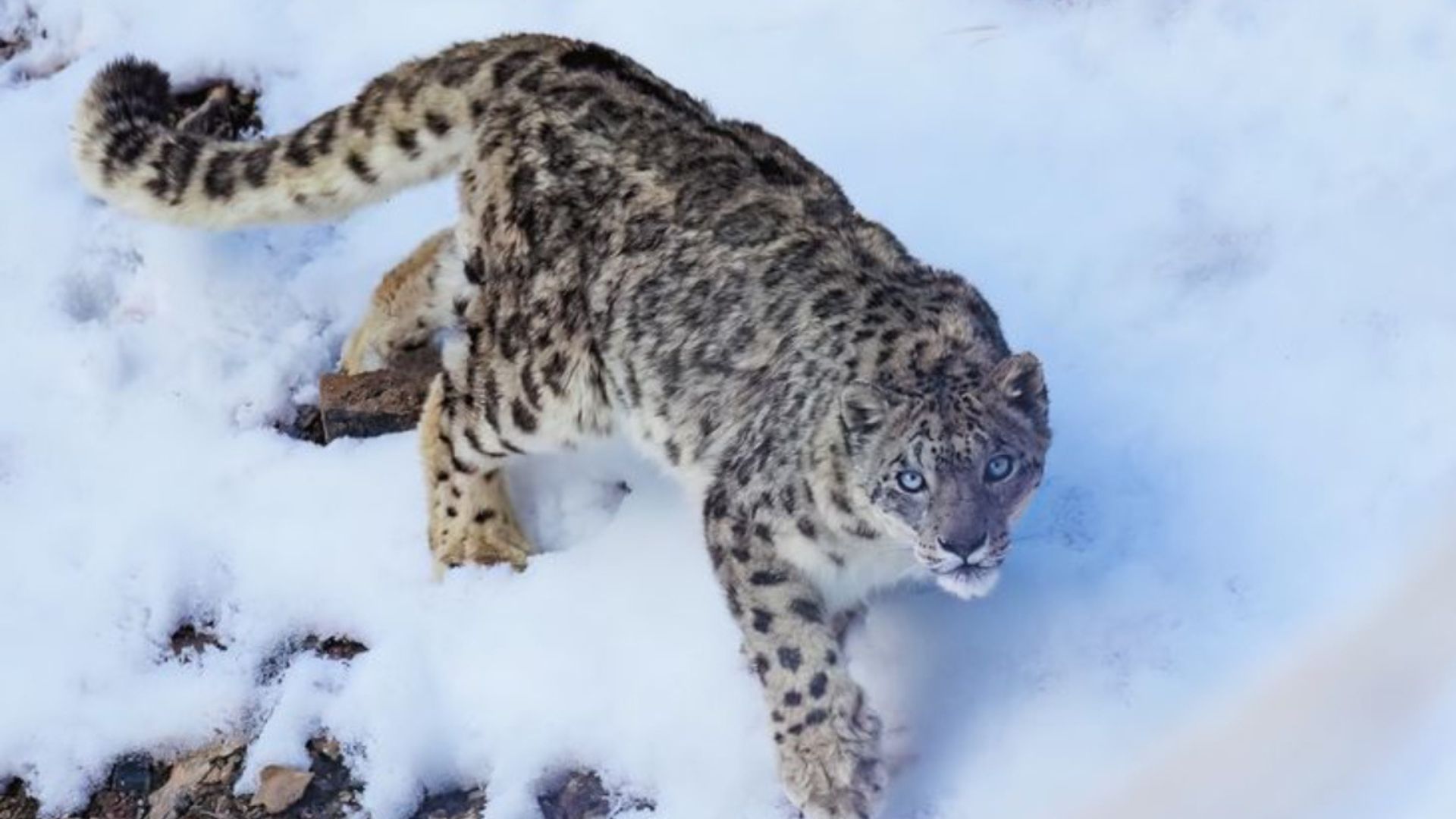
Snow leopards, the mystical felines residing in the cold altitudes of the Central Asian mountains, are not just elusive but also fascinating creatures worth knowing about.
These magnificent cats, often referred to as the ‘ghosts of the mountains,’ face numerous challenges in their harsh environments and are considered endangered due to various threats.
Let’s check out some incredible facts about these big cats, shedding light on their mysterious ways, their habitat, and the conservation efforts to save them.
1. The Ghost Of The Mountains
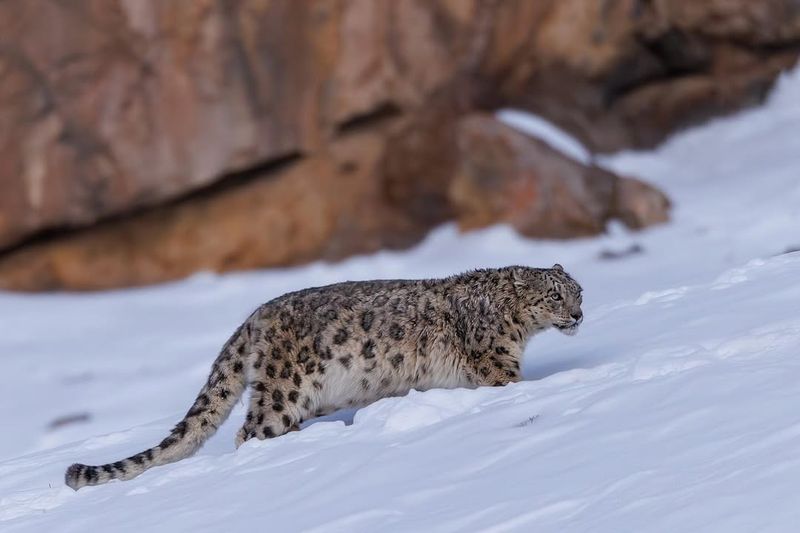
If you’ve ever wondered why the snow leopard is called the ‘ghost of the mountains,’ it’s because of its elusive nature and perfect camouflage. These big cats are masters of stealth, with their pale, spotted coats blending seamlessly with the rocky, snowy terrain of Central Asia. Their ability to remain unseen is both a blessing and a curse; while it aids in hunting, it also makes tracking them for conservation purposes quite challenging.
With their superb camouflage, snow leopards can sneak up on prey with ease. Scientists often have a difficult time spotting these elusive creatures due to their natural ability to blend into the environment. This ghostly presence, while aiding in their survival, also adds an air of mystery and intrigue to these majestic animals.
Their secretive nature has made them a symbol of mystery and magnificence in many cultures, often appearing in folklore as mystical beings. This combination of beauty, stealth, and rarity contributes to the snow leopard’s iconic status, yet it also presents unique challenges in efforts to study and protect them from extinction.
2. Himalayan Habitat
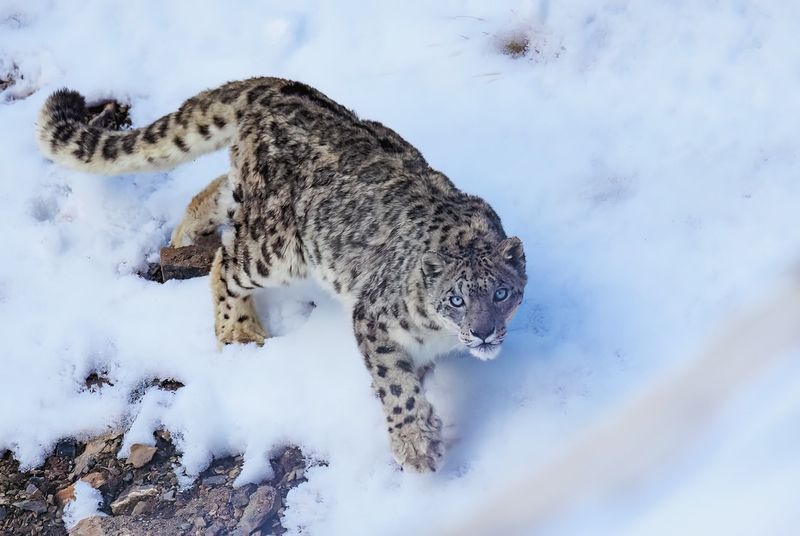
Snow leopards call the cold, rugged mountains of Central Asia home. Their habitat spans across 12 countries and includes some of the world’s most challenging terrains, such as the Himalayas and the Tibetan Plateau. These high-altitude areas are not just cold but also remote, making them perfect for the snow leopard’s solitary way of life.
Living in such extreme conditions, snow leopards have adapted beautifully to their environment. Their thick fur not only provides warmth but also acts as camouflage against the rocky and snowy backdrop. The harshness of their habitat is matched by their solitary nature, as they traverse vast territories in search of prey.
While these mountains offer protection from human encroachment, they also pose threats. Climate change and human activities like mining are altering these fragile ecosystems, forcing snow leopards to adapt to rapidly changing conditions. Conservationists are working hard to preserve these natural habitats to ensure the survival of this beautiful species.
3. Stealthy Predators
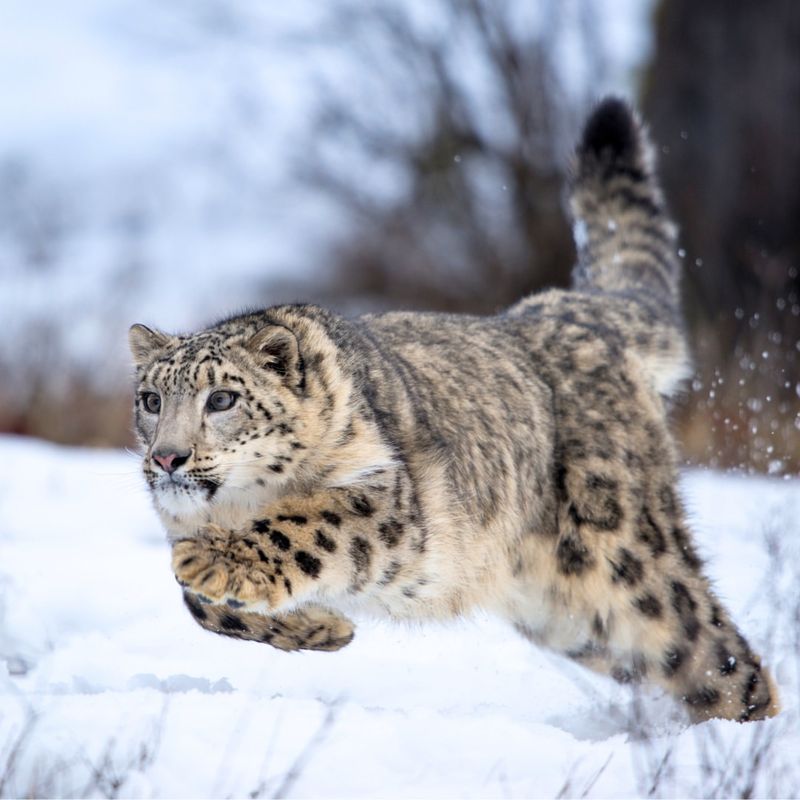
In the world of apex predators, the snow leopard reigns supreme with its impressive hunting skills. These big cats are not only agile and powerful but are also incredibly stealthy, able to approach their prey without making a sound. Their diet mainly consists of blue sheep, ibex, and other mountain animals that inhabit their rugged environment.
The snow leopard’s hunting technique is a testament to its adaptability and intelligence. By using the element of surprise, they can get within striking distance of their prey before making a swift, powerful attack. This method requires patience and precision, making snow leopards efficient hunters despite the scarce resources in their habitat.
While their stealthy approach is advantageous, it also highlights the delicate balance of life in the mountains. Prey scarcity due to habitat loss or human interference can have dire effects on snow leopard populations. Thus, ensuring a stable ecosystem is crucial for sustaining their food sources and, consequently, their survival.
4. Unique Physical Features
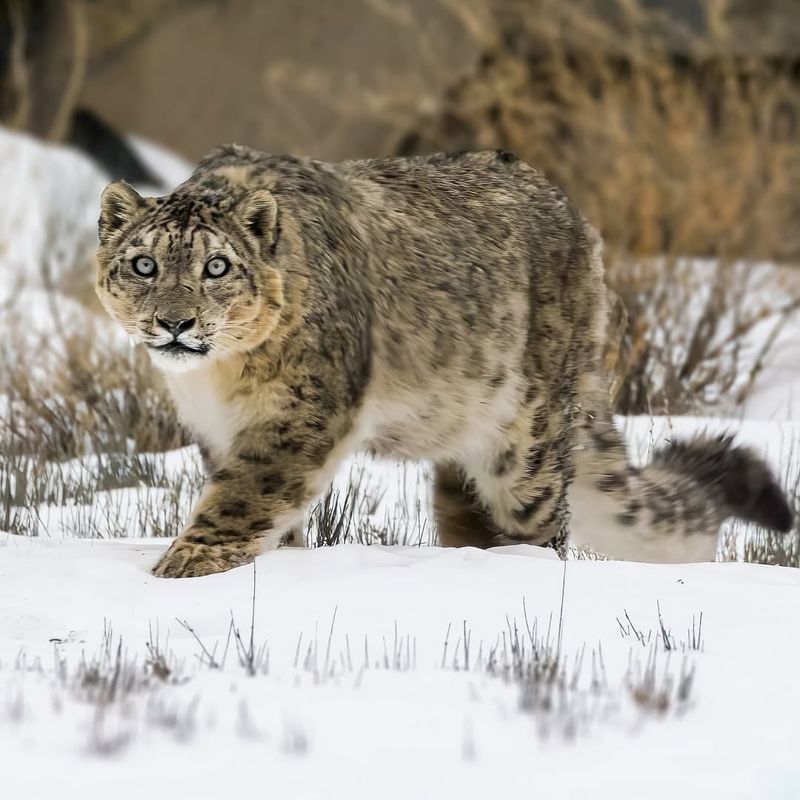
Snow leopards are not just any big cats; they possess unique physical features that set them apart in the feline world. One of their most distinctive characteristics is their thick, luxurious fur, which keeps them warm in freezing temperatures. The fur is not only dense but also patterned with rosettes and spots, providing excellent camouflage.
Their long, bushy tails, which can be up to a meter in length, are more than just a balancing tool. They serve as a warm cover for their faces while resting and help in maintaining balance during agile movements across steep and rocky terrains. This combination of features makes the snow leopard perfectly adapted to its environment.
The snow leopard’s powerful, large paws act like natural snowshoes, distributing their weight evenly to prevent sinking into the snow. These adaptations are essential for navigating their rugged, mountainous habitat efficiently. These unique features not only aid their survival but also make them one of the most fascinating cats to observe.
5. Solitary Wanderers
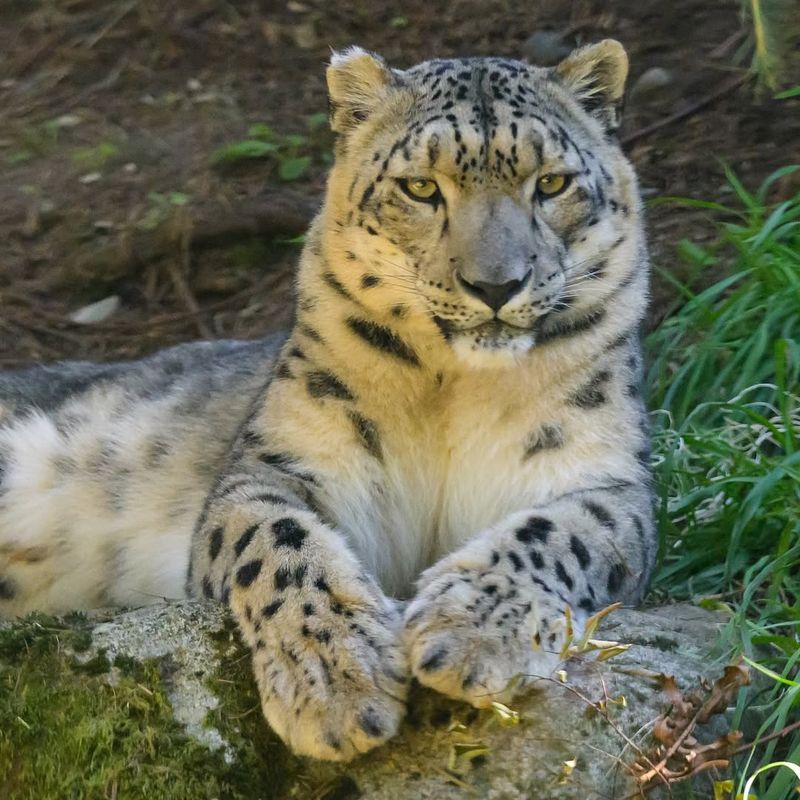
Unlike other big cats that might roam in prides or pairs, snow leopards prefer their own company, traversing vast mountainous territories alone. This solitary nature is a strategic adaptation to the sparse resources in their environment.
They are known to cover large distances in search of food and mates, marking their territory with scent to ward off intruders. This solitary lifestyle means they have to be self-reliant, honing their survival skills to perfection. As a result, they have developed a strong sense of independence and resilience.
While their solitary nature is a marvel, it also poses challenges for conservationists trying to study and protect these elusive creatures. Understanding their behavior and movements requires patience and innovative tracking methods, vital for effective conservation strategies.
6. Motherhood In The Mountains
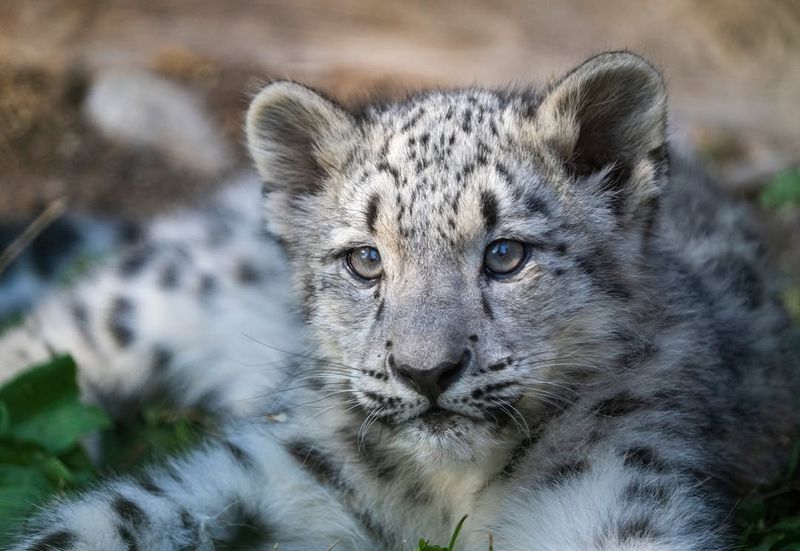
Motherhood among snow leopards is a remarkable display of strength and nurture. Female snow leopards, after a gestation period of about 90-100 days, usually give birth to two or three cubs in a secluded rocky den. These dens provide warmth and safety from predators and harsh weather conditions.
Snow leopard mothers are fiercely protective and devoted to their young, teaching them essential survival skills until they are self-sufficient. The cubs remain with their mother for up to two years, learning how to hunt and navigate their harsh environment. This period is crucial for their development, as they acquire the skills needed to survive alone.
The nurturing bond between a mother and her cubs is crucial for the continuation of the species. However, with threats like habitat loss and poaching, the survival of young cubs is increasingly at risk. Conservation efforts aimed at protecting snow leopard habitats are vital to ensure these majestic creatures continue to thrive in the wild.
7. The Art Of Camouflage
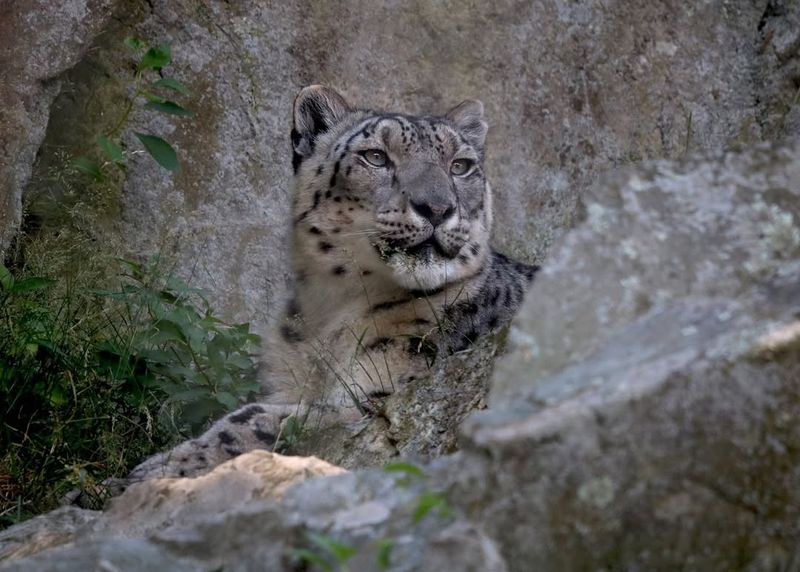
The snow leopard’s ability to blend into its surroundings is nothing short of an art form. Their coats, a stunning mix of grey, white, and black patterns, provide the perfect camouflage against the rocky, snow-dusted mountains they inhabit. This natural disguise is key to their survival, enabling them to sneak up on prey and avoid potential threats.
Their camouflage is not just for hunting but also a defense mechanism. By remaining unseen, snow leopards can avoid conflicts with larger predators and humans. This skill is so effective that even experienced researchers find it challenging to spot them in their natural habitat.
This remarkable adaptation has made the snow leopard a symbol of mystery and majesty. However, their invisibility also complicates efforts to monitor and protect them. Innovative technologies and tracking methods are essential to study these elusive creatures and ensure their conservation.
8. Vocalizations Of The Snow Leopard
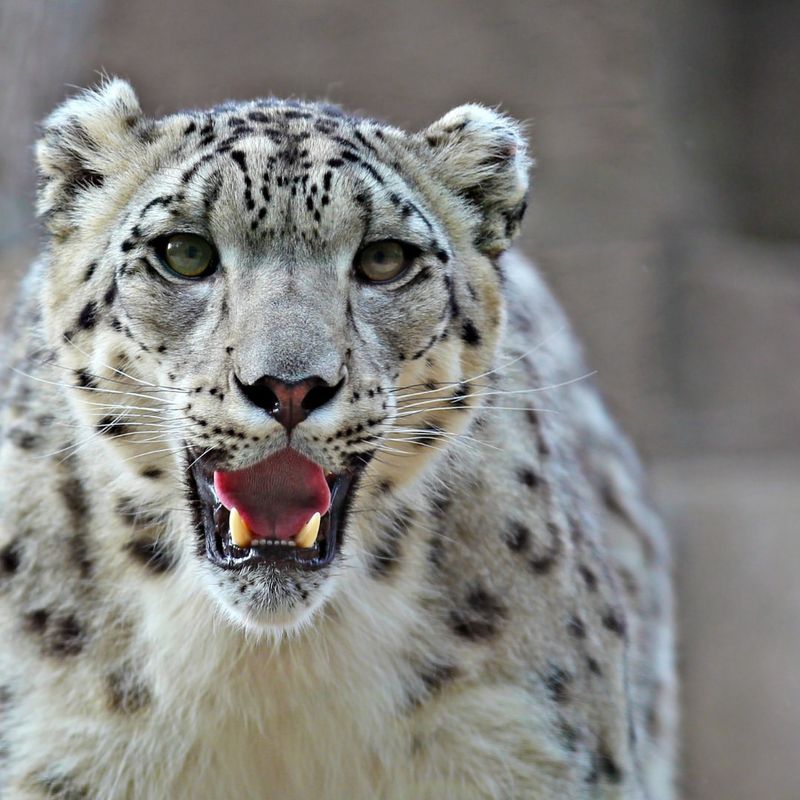
Unlike the loud roars of lions, snow leopards communicate with softer, more subdued vocalizations. These big cats have a unique range of sounds, including hisses, mews, and growls, which they use to interact with each other and mark their territory. Their most distinctive call is a non-threatening ‘chuffing’ sound, used to signal peaceful intentions.
Snow leopards are also known for their ability to mimic the sounds of their natural environment, further enhancing their stealth. This vocal adaptability helps them communicate over long distances in the mountainous terrain where visibility can be limited.
These vocalizations are not just communication tools but also play a role in mating rituals and territorial disputes. Understanding these sounds is crucial for researchers studying snow leopard behavior, as it provides insight into their social interactions and environmental adaptations.
9. Endangered But Resilient
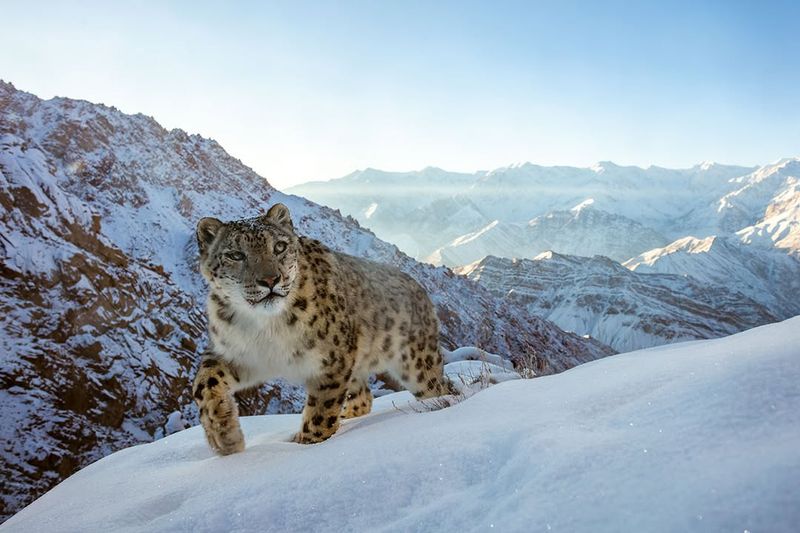
The snow leopard’s status as an endangered species has made it a focal point for conservation efforts worldwide. With fewer than 7,000 individuals left in the wild, these magnificent cats face numerous threats, including habitat loss, poaching, and climate change. Despite these challenges, snow leopards have shown remarkable resilience, adapting to survive in an ever-changing environment.
Conservationists are working tirelessly to address these threats through various initiatives, such as anti-poaching patrols and community engagement programs. Efforts to protect and restore snow leopard habitats are crucial for their survival, as these environments provide the resources they need to thrive.
While their future remains uncertain, the resilience of snow leopards inspires hope. By raising awareness and supporting conservation programs, we can help ensure these majestic creatures continue to roam the mountains for generations to come.
10. The Role Of Paws
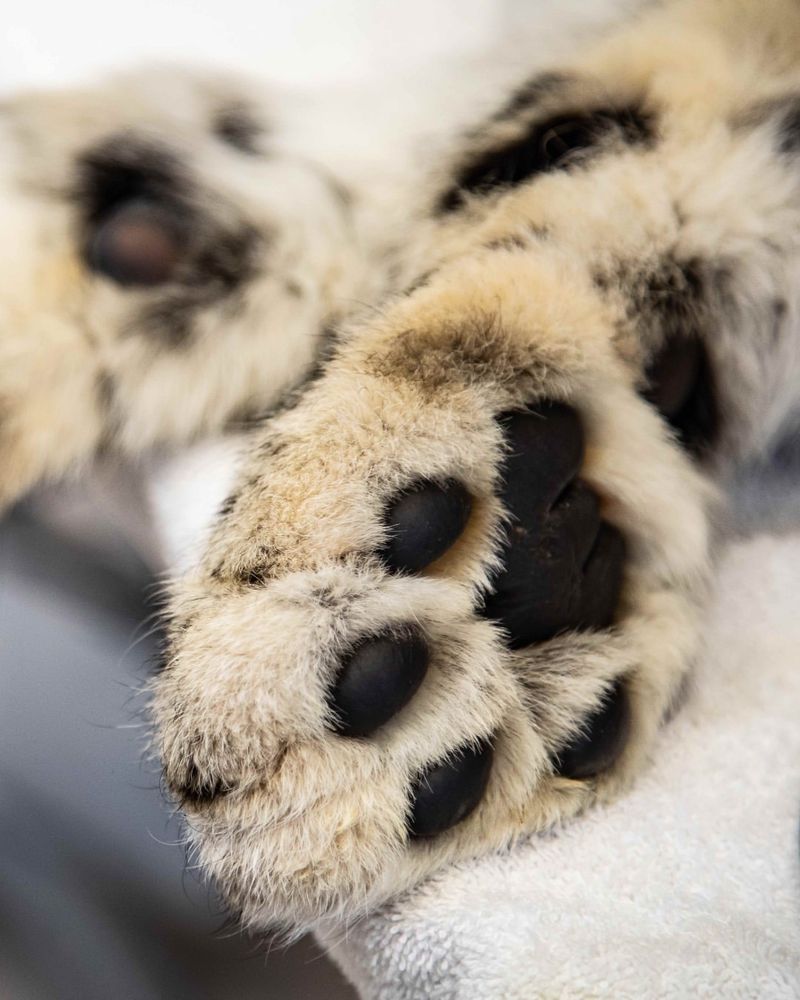
A snow leopard’s paws are more than just tools for walking; they are masterfully designed for life in the snow. These large, furry appendages act like natural snowshoes, distributing the leopard’s weight to prevent sinking into snowy terrain. This adaptation is crucial for survival in their cold, mountainous habitat.
The fur covering their paws offers insulation against the freezing temperatures, while the wide spread of their toes provides stability on icy surfaces. This clever design allows snow leopards to move with grace and precision, even in the most challenging environments.
These paws are not only functional but also symbolize the snow leopard’s incredible adaptability. By understanding these adaptations, conservationists can better appreciate how these big cats have evolved to thrive in their unique habitat, further emphasizing the importance of preserving their natural environment.
11. Climate Change Challenges
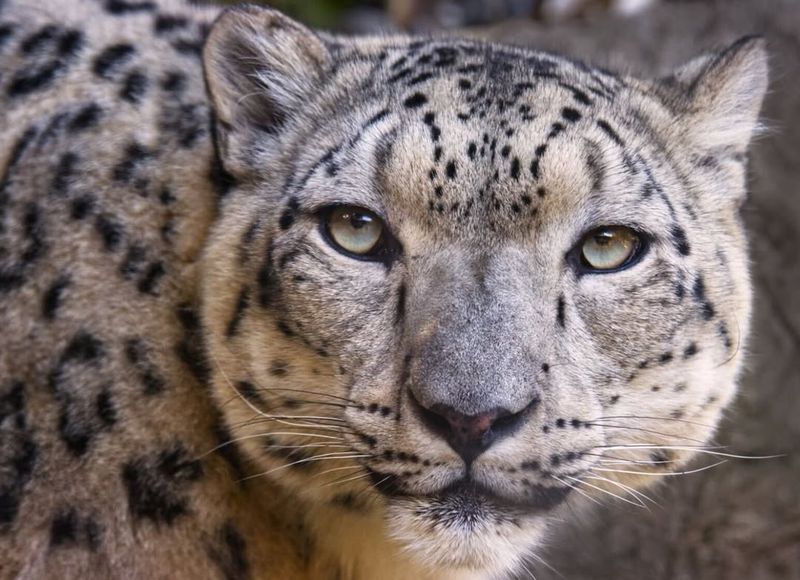
Climate change poses a significant threat to snow leopards, as rising temperatures and shifting weather patterns alter their mountainous habitats. The melting of glaciers and changes in snowfall patterns impact the availability of prey and suitable habitat, forcing these big cats to adapt to new conditions.
These environmental changes not only threaten the snow leopard’s survival but also affect the delicate balance of the entire ecosystem, impacting the flora and fauna that call these mountains home. Conservationists are advocating for measures to combat climate change and protect these fragile ecosystems.
While snow leopards have shown adaptability in the past, the rapid pace of climate change presents unprecedented challenges. By supporting efforts to mitigate climate change, we can help preserve the natural habitats of snow leopards and ensure their survival in a warming world.
12. Cultural Symbolism
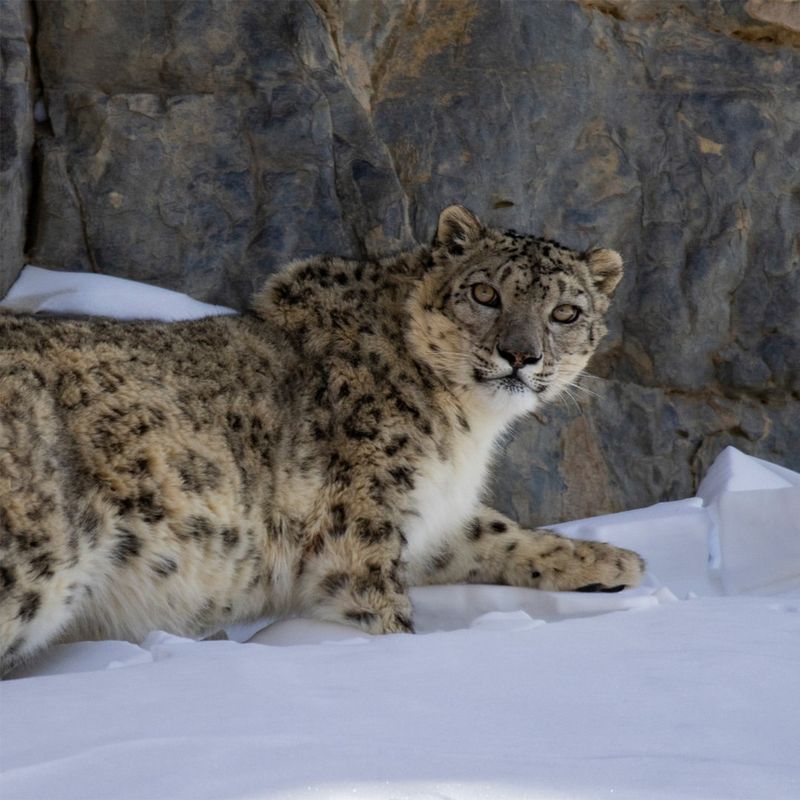
Throughout history, the snow leopard has held a special place in the hearts and myths of the people living in its range. Often seen as a symbol of power and mystery, these majestic cats appear in folklore and art across Central Asia, embodying the spirit of the mountains.
In many cultures, snow leopards are revered as spiritual guides or protectors, often associated with mountain deities and legends. Their presence in stories and art highlights the deep connection between these big cats and the people who share their habitat.
This cultural significance has spurred conservation efforts, as communities recognize the importance of preserving the snow leopard as part of their heritage. By engaging local populations in conservation initiatives, we can ensure that the snow leopard continues to inspire and thrive in the wild.
13. The Leopard’s Diet
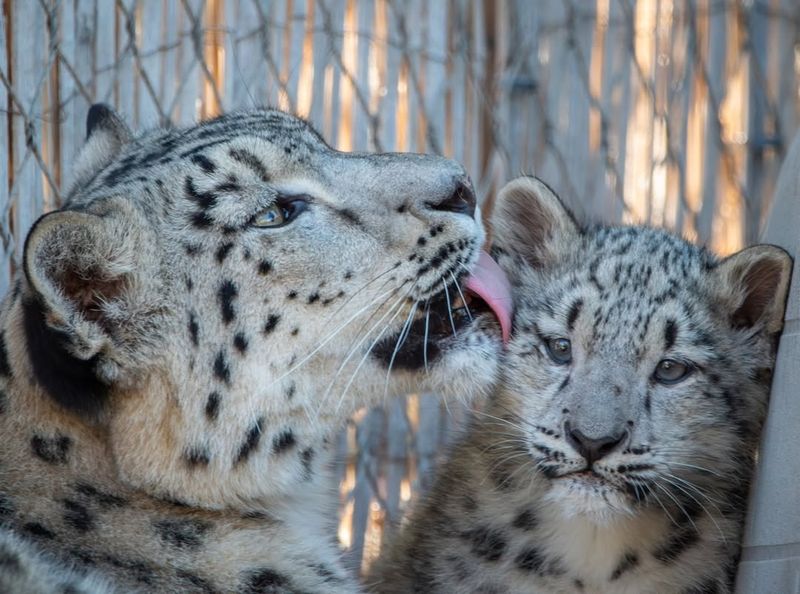
The snow leopard’s diet is as rugged as its mountainous home. These apex predators primarily hunt large prey, such as blue sheep, ibex, and other mountain ungulates, which are perfectly adapted to the steep, rocky terrain. Their hunting prowess is a testament to their strength and agility, allowing them to take down animals often much larger than themselves.
Snow leopards are opportunistic hunters, adapting their diet to the availability of prey. They have been known to eat smaller mammals, birds, and even vegetation when necessary. This flexibility in their diet highlights their adaptability and resilience in the face of changing environmental conditions.
The availability of prey is crucial to the snow leopard’s survival, and conservation efforts focus on maintaining healthy populations of these prey species. By ensuring a stable food source, we can help support the snow leopard’s continued existence in the wild.
14. Community Conservation Efforts
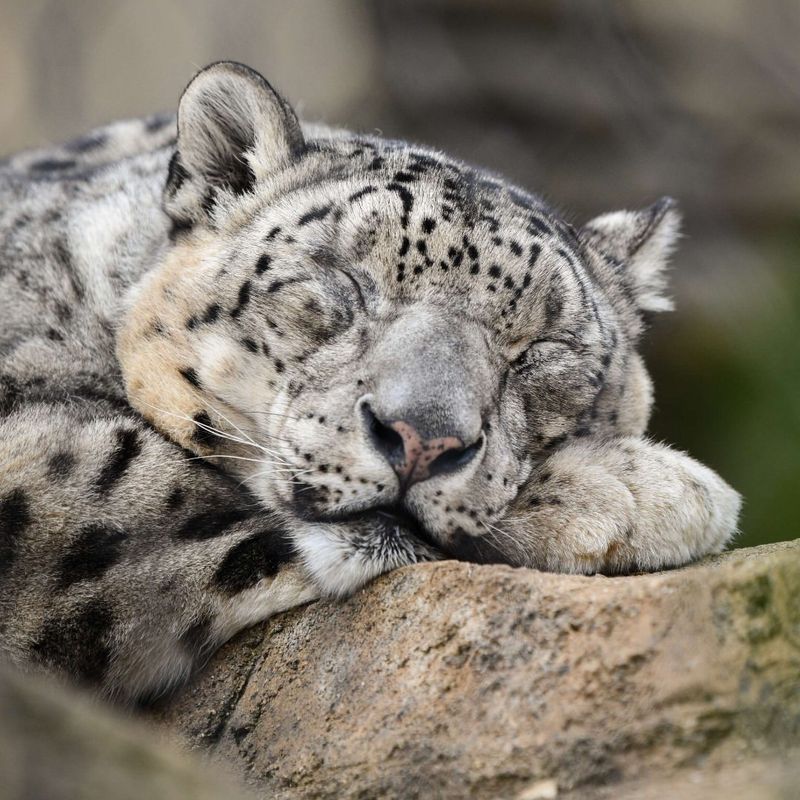
Conservation efforts to protect snow leopards are not just the domain of scientists and wildlife experts; local communities play a vital role too. By involving residents in conservation projects, there’s a greater understanding and appreciation of the snow leopard’s ecological role and its importance to the region’s biodiversity.
Community-based initiatives often include education programs, sustainable livelihood projects, and anti-poaching patrols. By empowering locals to take an active part in conservation, there’s a shift towards coexistence, reducing human-wildlife conflict and promoting sustainable practices.
These collaborative efforts are essential for long-term conservation success. By working together, conservationists and communities are creating a future where snow leopards can thrive alongside people, ensuring these majestic creatures continue to grace the mountains with their presence.
15. Snow Leopards In Pop Culture
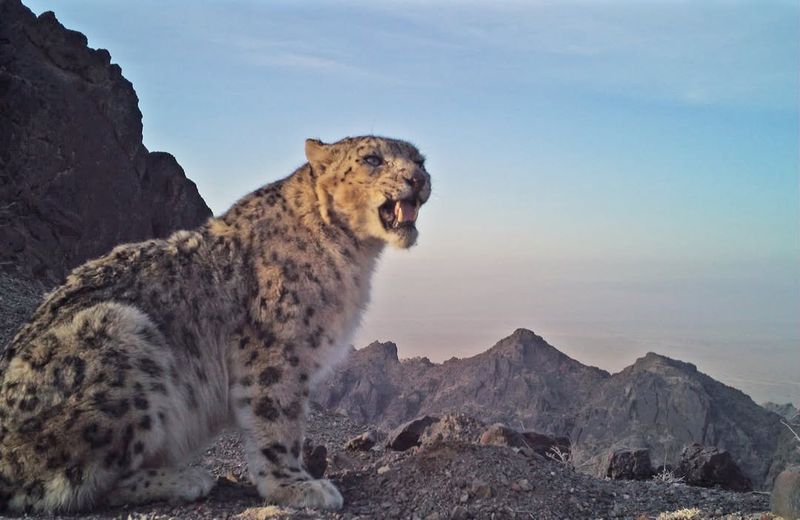
The snow leopard’s mystique has transcended its natural habitat, making a significant impact on popular culture. From feature films to literature and even video games, these elusive big cats have captured the imagination of people worldwide, symbolizing mystery, beauty, and strength.
In movies, snow leopards often appear as majestic creatures or formidable protagonists, highlighting their grace and power. They also serve as inspiration for characters in books and games, embodying traits of stealth and resilience that resonate with audiences.
This presence in pop culture helps raise awareness about the snow leopard’s plight, bringing attention to the need for conservation efforts. By capturing hearts and minds on a global scale, these magnificent cats continue to inspire action towards their protection.

